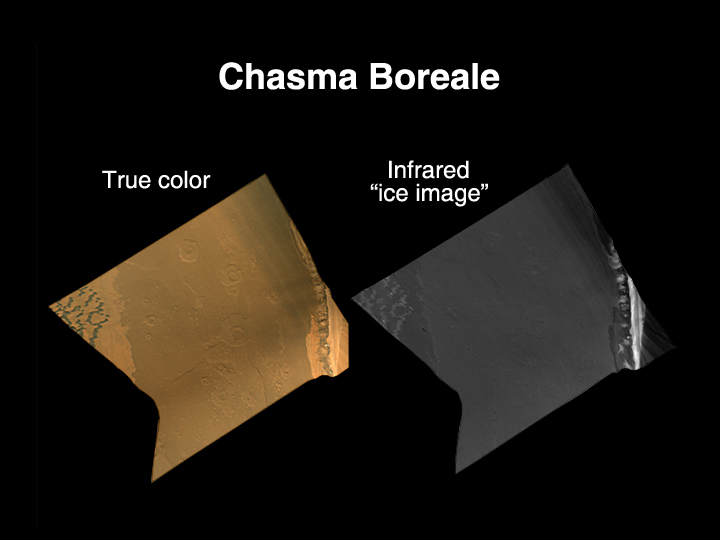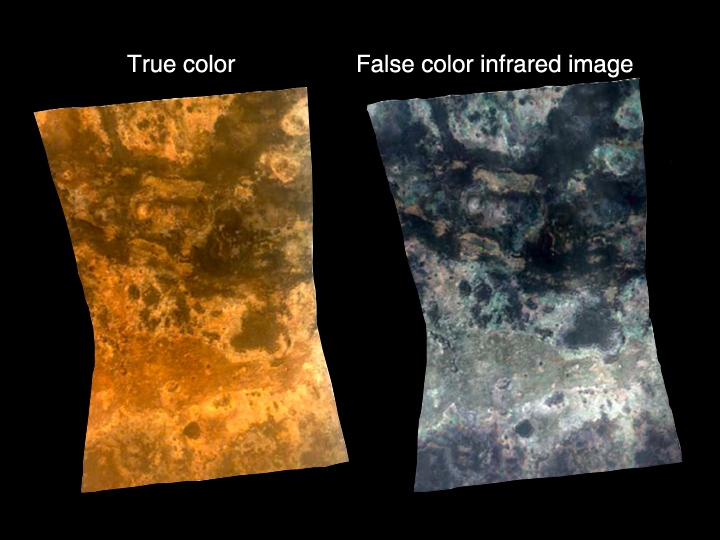Press Release
NASA Orbiter Reveals New Details of Mars, Young and Old
Mon, 10/16/2006 - 09:00
During its first week of observations from low orbit, NASA's newest Mars spacecraft is already revealing new clues about both recent and ancient environments on the red planet.
Scientists hope the Mars Reconnaissance Orbiter will answer questions about the history and distribution of Mars' water by combining data from the orbiter's high-resolution camera, imaging spectrometer, context camera, ground-penetrating radar, atmospheric sounder, global color camera, radio and accelerometers.
Between Sept. 29 and Oct. 6, science instruments on the spacecraft viewed dozens of sites that reflect different episodes in Mars' history. The diverse sites provide a good test for the capabilities of the spacecraft instruments. The orbiter will begin its primary science mission phase in early November when Mars re-emerges from passing nearly behind the sun.
The instruments are seeing details in the shapes and icy composition of geologically young layering near the Martian north pole. Other views offer details of a mid-latitude valley whose upper layers have been eroded away, revealing an underlying clay layer that formed a few billion years ago, when wet conditions produced the clay. Observations of a southern-hemisphere crater show fine-scale details of more recent gullies, adding evidence that they were carved by flowing water.
"In this opening phase we have tested the instruments, and they are working perfectly," said Dr. Steve Saunders, Mars Reconnaissance Orbiter program scientist at NASA Headquarters, Washington. "The teams are getting amazing science data. They are ready to fulfill the mission's science objectives and to support other Mars missions. One image is already helping the Mars Exploration Rover team choose a route to explore Victoria Crater. Others will help guide the selection of a safe site for the future Phoenix Mars Lander."
In Chasma Boreale, a vast valley that juts into the north polar ice cap, the orbiter's spectrometer sees layers that vary in soil composition and in how much ice is mixed with the soil. A dark underlying layer contains little ice, but just beneath it lies ice-rich material resembling higher layers. The spectrometer takes pictures both in visible-light and infrared wavelengths useful for identifying what a target is made of.
"You see more-ice-rich and less-ice-rich layers, which tells you that conditions changed from the time one layer was deposited to the time another layer was deposited," said Dr. S. Murchie of The Johns Hopkins University Applied Physics Laboratory (APL), Laurel, Md. "These layers are geologically young — on the order of thousands or millions of years — and may hold clues about climate cycles."
Murchie is the principal investigator for the APL-built Compact Reconnaissance Imaging Spectrometer for Mars (CRISM) instrument, which also examined a lower-latitude target named Mawrth Vallis. The European Mars Express spacecraft previously discovered ancient deposits of clay minerals that could form only if water were present for a long time at Mawrth Vallis. CRISM has resolved smaller-scale compositional features and detected differing clay mineral content. The clay-rich areas show some of the best evidence for conditions possibly favorable for life on ancient Mars, Murchie said.

